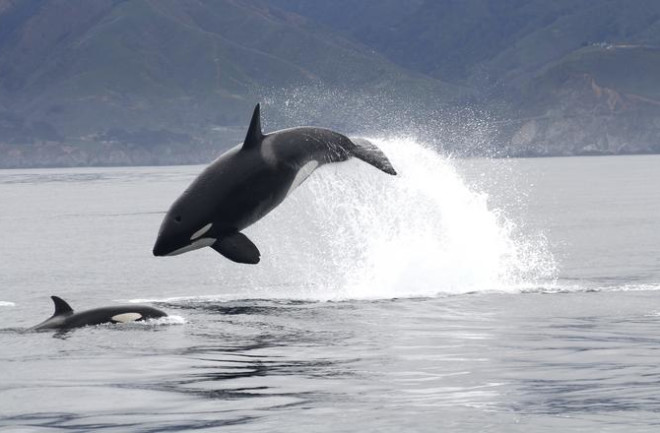A group of little-studied deep-sea-dwelling orcas sometimes rams prey and catapults sea lions, according to a report in PLOS ONE.
Those observations by scientists from the University of British Columbia Institute for the Oceans and Fisheries (IOF) are notable because deep-water-grazing orcas may represent a new subcategory of killer whales, according to another study in Aquatic Mammals. Orca categories — called ecotypes — include residents, transients, and offshores. The “deep-water-transient” subtype sightings are also important because they happen so infrequently.
Deep-Water Hunting Behavior
“Observations of killer whales in the high seas are rare,” Josh McInnes, a graduate student at the IOF and an author of both studies, said in a press release. “We’re beginning to get a sense of killer whale movements in the open ocean and how their ecology and behavior differs from populations inhabiting coastal areas.”
The researchers gathered data on killer whales around the Monterey Submarine Canyon in California from 2006 to 2018 and from whale-watching tours there between 2014 and 2021. They noticed markedly different hunting behavior than coastal cohorts, which sometimes use physical features to trap their quarry.
Read More: Orcas May Be Attacking Larger Fin Whales as a More Efficient Food Source
The deep-water orcas adapted their hunting techniques because prey can’t easily be cornered far out at sea. Instead, they crash into grey whale calves and northern elephant seals to subdue them. They also swat sea lions with their tails — sometimes launching them into the air. They also tend to hunt in groups — sometimes spreading out slightly, other times in more tightly coordinated formations.
A New Cohort?
In the Aquatic Mammals paper, which posits that some deep-water orcas represent a new subtype, IOF researchers studied another group of mammals off the coast of California and Oregon from 1997 to 2021. These orcas hunted a herd of nine adult female sperm whales, eventually making off with one. “It is the first time killer whales have been reported to attack sperm whales on the West Coast,” said McInnes in a press release. “Other encounters include an attack on a pygmy sperm whale, predation on a northern elephant seal and Risso’s dolphin, and what appeared to be a post-meal lull after scavenging a leatherback turtle.”
Besides demonstrating different hunting behavior than their coastal-hugging kin, some deep-water orcas may sport different physical features as well, including variations in patch patterns near their dorsal fins, among other subtle distinctions. But the researchers saw another more obvious, less natural distinction: all but one of the 49 whales surveyed sported bite marks from cookie-cutter sharks. Those scars lend further credence to the theory that the cohort indeed represents a new subtype because the parasitic fish only live in deep water.
Although deepwater orcas have been spotted sporadically over the years, the study solidifies the hypothesis of a new subtype. “It’s pretty unique to find a new population,” Andrew Trites, IOF professor and co-author of both papers, said in a press release. “It takes a long time to gather photos and observations to recognize that there’s something different about these killer whales.”
Read More: Instead of Hunting in Groups, Orcas May Be Attacking Great White Sharks Alone

